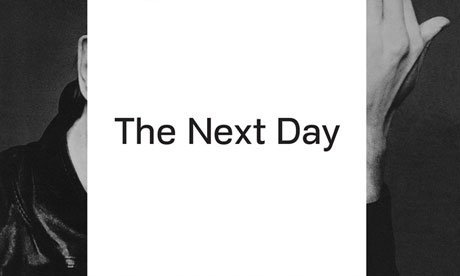| David Bowie's |
So
it's just a white square with text over an old image, is it? Think again – The
Next Day's cover makes you use your mind.
This
is a RECORD COVER. This writing is the DESIGN upon the record cover. The DESIGN
is to help SELL the record. We hope to draw your attention to it and encourage
you to pick it up. When you have done that maybe you'll be persuaded to listen
to the music – in this case XTC's Go 2 album.
The
Hipgnosis-designed sleeve for XTC's Go 2 album is, famously, an essay about the
design of the cover itself, and how it is intended as a marketing trick. As the
music industry has shifted from analogue to digital, the words have subtly
shifted. "This is a CASSETTE COVER" was joined by "This is a
COMPACT DISC COVER".
The
digital edition in iTunes? It says "This is a RECORD COVER". It ought
to have said something like: "This is an IMAGE EMBEDDED WITHIN AN BINARY
AUDIO FILE."
I
mention it because I think it is one of the titles that illustrates how weirdly
our analogue industries represent their products within a digital world. I've
always said I'll know that ebooks have come of age when the images on your
computer or device to represent them aren't artificially constrained by the
shape that printed books are. There is no need for ebook covers to be tall and
thin and hard to fit text on.
The
album sleeve that has prompted me to write about this, of course, is David
Bowie's The Next Day. Jonathan Barnbrook has written about his design, and it
contains what I think is a beautiful sentence:
"We know it is only an album cover
with a white square on it but often in design it can be a long journey to get
at something quite simple which works and that simplicity can work on many
levels – often the most simple ideas can be the most radical."
I've
seen criticism, of course, that you could knock up the final design in five
minutes, but the process of getting there is intriguing to me. I can't think of
another artist who has taken one of their own iconic album artworks, and
subverted it in this way. It is more usual to recreate the image, as the
Beatles did with the 1969 photographs in Manchester Square, which echoed the cover
of Please Please Me and which were used for the Red and Blue albums, or as Sir
Peter Blake did with a 2010 version of Sgt Pepper.
Another
criticism I've seen is the harsh contrast between "the fine-grain mono
background and harsh 'paint' foreground". Again I think this is an
interesting mix of the analogue and digital. Let us not forget that Bowie's 70s artwork
wasn't perfect in itself. The original UK
vinyl issue of Ziggy Stardust featured a horribly obvious ugly cut-and-paste to
change the catalogue number from the US edition – the production method
encroaching upon design.
Whether
this design thinking translates to mass appeal is another matter. Barnbrook
says "we worked on hundreds of designs using the concept of obscuring this
cover" but admits that "we understand that many would have preferred
a nice new picture of Bowie".
The risk for older artists is that new material can never recapture their glory
years – and choosing such an odd and aesthetically unappealing final image for
The Next Day's sleeve risks the accusation that the sleeve is as bland as the
new material might be.
The
fact that I still keep referring to it as a "sleeve" is telling.
While there may still be a physical release of the album, many people will this
week be listening to lead single Where Are We Now? on devices that represent
the "sleeve" as a static image behind glass. There has been precious
little innovation in the way that artwork is presented alongside digital
records or books. Hack the Cover by Craig Mod was a fascinating essay looking
at how to subvert the traditional expectations of the ebook cover, but few
artists seem to be exploring similar possibilities with digital music files.
Even the fact that most albums feature exactly the same artwork for every track
seems a wasted opportunity.
Only
time will tell how well the design and the album itself stand up against the
rest of Bowie's
impressive catalogue. But wouldn't it be wonderful if an artist who had spent
so many years reinventing his image, helped us to reinvent our expectations of
what album covers could be in a digital era?

No comments:
Post a Comment